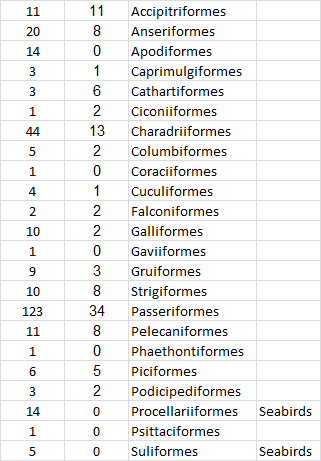In order to help resolve the debate about whether speciation occurs more rapidly after an extinction event, or whether the new species have all been present before but not in sufficient numbers for fossils to have been found.
Let’s define a “fossil” as any trace older than older than 500,000 years, perhaps older then 100,000 years. (Perhaps simpler to just say “Pleistocene or Pliocene” or older).
To clarify, “panthera” is a genus, with separate species lion, tiger, jaguar, leopard. So I’m not asking for fossils of separate species, any one of the species will do. “There are currently 1258 genera, 156 families, 28 orders, and around 5937 recognized living species of mammal.”
For what percentage of modern mammal genera have fossils been found?
Bird?
Mollusc?
Insect?
Fish? (More common for freshwater fish?)
Flowering plants (including pollen)?

